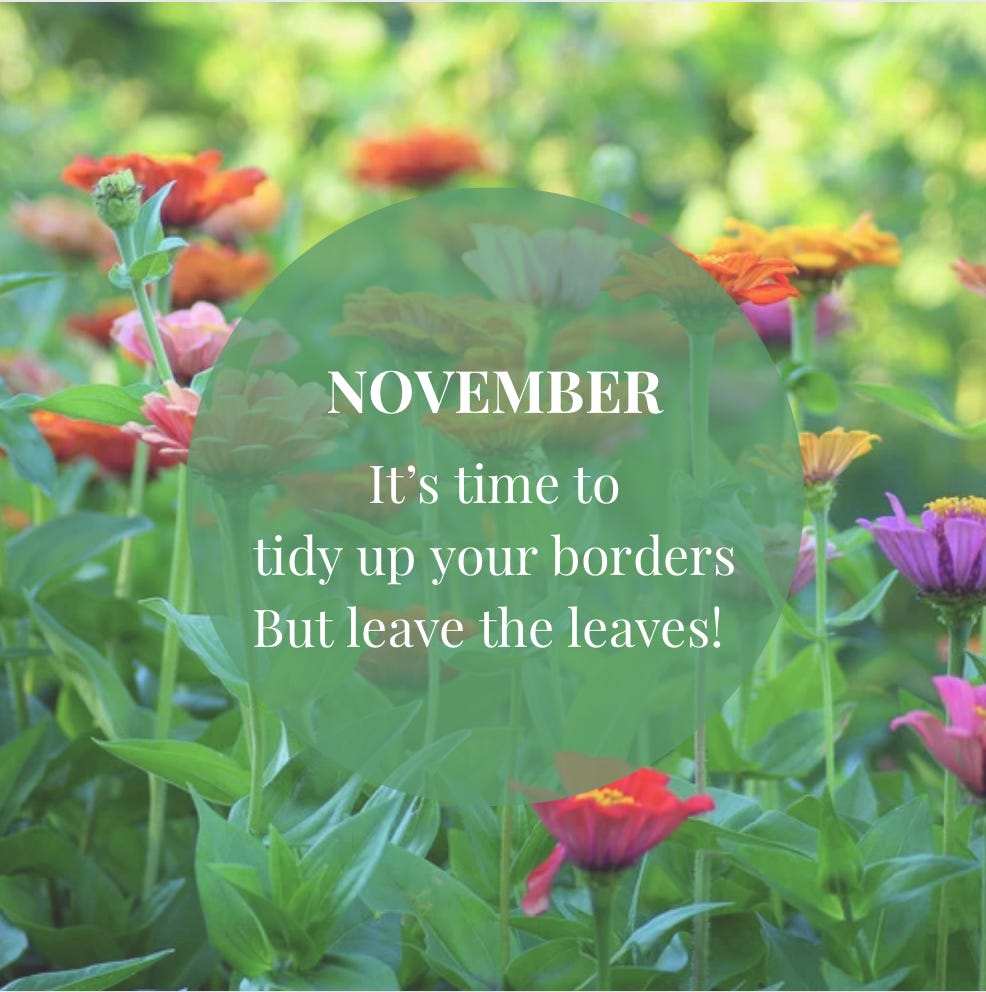Perfect Pruning!!!
Wouldn't it be great if the mysteries of perfect pruning could be debunked and you could go into the garden look at the plant in front of you and just know what to do!?Well . . . I can teach you . . .
This is knowledge of significant value I have built up over my nearly 20 year horticultural career. I have taught it at RHS Wisley, I am always waxing lyrical with my clients about one part or another of the process and now I am making it available direct to your inbox. As the season develops, with prompts and tips over the gardening year.
This isn’t something you can read in a book either its a new way of looking at pruning and by breaking down my own method I will help you to know what to prune and when just by looking!
Part of my NEW paid series that will run throughout the year as an evergreen seasonal series you can refer back to and learn from every time you receive an email.
First issue will be this Sunday 12th November 2023 - exciting . . . . £5.99 per month
The price of a cuppa and cake (actually half the price, well you can enjoy a cuppa and a piece of cake as you read!)
All you will need is an open inquiring mind and a willingness to read on. I will be:
Breaking down the principals of growth in woody perennials. Looking at the roots, stems, growth nodes and flower buds. As you understand the plant you can read it like a visual language; the semiotics of plants and learn how to work with with the plant to prune for the most abundant blooms and the best healthy growth.
We will look at what we want from plants and then the ways to prune for best: screening, fruiting, height, shape, flower power, leaf cover, fruit
We will then look at the physiological indicators for pruning and here is where we get to the special insights I have worked on to simplify the process.
Then we can get creative! (well it is me - a garden designer!)
Once you understand why a plant grows the way it does and you can experiment to encourage more of what you want.
We all want different things from different woody plants but they all grow the same so we will start at the beginning.
What do we know about woody perennials? What do I mean by a woody perennial?There is no need to know unless this is your specialism. I mean why would you? Like every profession there is a horti language and I will do my best to use the correct terms but break them down so we all understand.
I am potty about pruning! And sharing an inside track on the Why is a personal passionate purpose.
What is coming up . . . in our free chat here @ Horti~verse?
Well first a new name, those who know me know I love the poetics of life and nature and I will always be flowery with my language I ever will use Fleur/Fleurself pronouns because language is a lovely thing and to be forever playful is a attitude I hope to sustain.
But down to horti business
Our seasonal how-to guides are starting this week.
There is actually quite a bit in the garden you can enjoy getting stuck into.
I will take you through somethings I have been doing in the next ready however if you have a new/ or manageable border I would encourage you to leave your border cut back till spring.
In fact to quote a instagram influencer Alexis Nikole @blackforager who I really enjoy (check her out if you’re on instagram! and and follow us too @mimosagardendesign)
Anyways Alexis does a fab post:
“Leave the leaves!”
So some reasons to leave the leaves include:
· To retain trace elements and soil fertility
· For protection against hoar frosts and snow during winter (an insulating mulch)
The standard items you may know about:
· Standing winter interest – grasses seed heads
· Overwintering insects
· Birds and local wildlife
In the first instance leaving the perennials standing and not removing all leaf litter can benefit your garden. To explain the WHY (my must go-to explanation); what happens when a plant drops its leaves is explained below in an excerpt from a previous article.
Leaves are the active factory of the plant
converting sunlight and nutrients, dilute
in water, through photosynthesis. However
with reduced sunlight and drying winds this
process is a liability. Instead the tree seals up
the union point of the leaf (known as a scar)
with a cork like barrier and as this happens,
Chlorophyll the green pigment responsible
for photosynthesis, is broken down into the
needed sugars and drawn down into the safely
of protected roots. Thus the green disappears
first leaving the remaining pigments/trace
minerals to give a slow reveal of colour:
Carotenoids for yellow – orange on birch and
Acer. Anthocyanins are responsible for the red
fire of Cherry, Liquidambar and Virginia creeper.
These cannot be mobilised in the same way for
the tree so they are dumped, a cleansing before
dormancy and rest. There is the need for decay
in order to have rebirth and the leaf mould is
good stuff too.
So what about removing this leaf litter in spring?
Well most of the goodness has been removed from the desiccated plant and it is mainly fibre which we compost and in theory these can be returned to the borders as a mulched fertiliser.
When I worked at Waltham Place a biodynamic, Organic/Social Association farm and garden, the borders were mulched back on to the beds and so there was a fast action decomposition, which released nutrients and suppressed weeds. However there are still bugs in there and I prefer composting - a slow warm process that provides time for insects and other natives to our gardens to evade us!
So you can see that it is worth keeping these immobile nutrients in the localised environment which are very necessary for active growth in the plant later.
Are there any circumstances where you should remove the leaves from your borders?
There are exceptions to the rules:
Very large leathery leaves can suffocate perennials beneath and so are best removed Walnut for instance and even Horse Chestnut.
Leaves on paths and patio when rotten are slip hazards and can stain patios!
If you have a large slug and snail population, as I did this last year clearing the leaf litter will expose the glassy eggs to the later frosts and offer a natural solution to help reduce the first flush in the spring populous.
Also when renovating your border with lifting and division or adding new additions you just need to clear it to see what you are doing! I have done this now in my own garden and I will be sharing on Facebook my progress.
I could, or you could do this lifting and division work in the spring however I know I will be too busy then and this is a nice time for me to get out and breathe deep in nature - the reason I got into this industry in the first place - to build gardens for me too.
Now that the garden is going dormant we need to understand why plants perform in order to be proactive with how to maintain our gardens sustainably. With careful consideration we can create a garden that looks lovely throughout the year. Managing how it looks through winter can bring joy and encourage more time spent outdoors too.
Tell me if you liked this article please and ask any questions.
Also SNEAK PEAK ~ I’m are working on my first horti book!! coming soon . . . .
Hope you enjoyed this read if so please share with other horti friends and loved ones
Love Lucie x x x




